ANIMALS
The Adorable World of Hedgehogs: 25 Things You Didn’t Know!
Published
4 months agoon
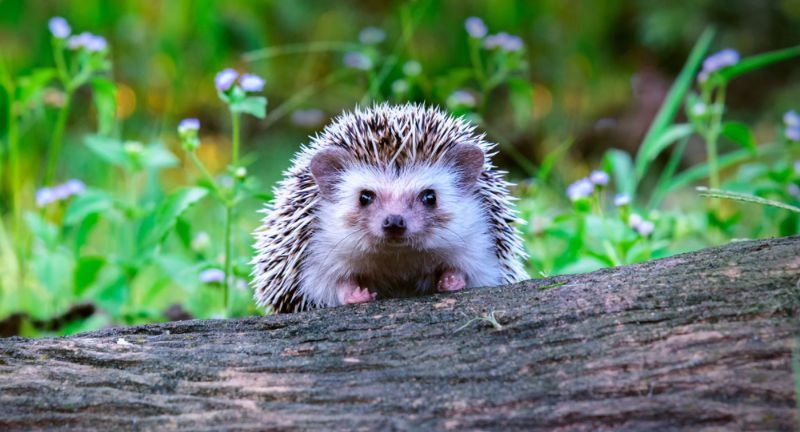
Shutterstock
Hedgehogs are some of the most fascinating creatures in the animal kingdom, known for their adorable appearance and unique characteristics. These spiky mammals have captivated the hearts of people for centuries, both in the wild and as beloved pets. From their ancient history to their quirky behaviors, hedgehogs are full of surprises. Their ecological importance and endearing habits make them not only fascinating but also vital to their habitats. Get ready to discover 25 incredible facts about these remarkable creatures that will deepen your appreciation for hedgehogs.
Hedgehogs Are Ancient Creatures

Shutterstock
Hedgehogs have existed for over 15 million years, making them one of the most ancient mammals still roaming the Earth. Fossils of hedgehog ancestors have been found, indicating that they survived drastic environmental changes over millennia. This long history highlights their resilience and adaptability in various climates and terrains. Their unchanged basic anatomy is a testament to their success as a species.
There Are 17 Species

Shutterstock
Hedgehogs are diverse, with 17 distinct species spread across Europe, Asia, and Africa. Each species is adapted to its unique environment, from deserts to forests. Interestingly, hedgehogs were introduced to New Zealand, where they’ve thrived in non-native habitats. Despite their global presence, they are all united by their characteristic spines and foraging behaviors.
They’re Named for Their Habitat and Sounds

Shutterstock
The name “hedgehog” reflects their preferred environment and distinctive noises. “Hedge” refers to their tendency to scuttle through hedges and undergrowth, while “hog” comes from their pig-like grunts and snorts. These sounds are used to communicate and locate food, adding to their charming appeal. Their name perfectly captures their essence as garden-friendly mammals with endearing quirks.
Hedgehogs Have Spines, Not Quills

Shutterstock
Hedgehogs’ spines are unique and different from porcupine quills. These spines are hollow, keratin-based hairs that serve as a lightweight yet durable defense mechanism. Unlike quills, they don’t detach but instead provide a spiky barrier when the hedgehog curls into a ball. This ingenious design helps them survive predator attacks and rough terrain.
They Curl Up for Defense

Shutterstock
When hedgehogs feel threatened, they have a remarkable way of protecting themselves by curling into a tight ball. This action exposes only their spiny exterior, making them nearly impossible to attack. Their strong back muscles help lock their bodies into this defensive position. It’s a simple yet effective strategy that deters most predators.
They’re Insectivores

Shutterstock
Hedgehogs are primarily insectivores, meaning they love to feast on bugs, worms, and other invertebrates. Their diet makes them a gardener’s best friend, as they naturally control pests. However, they also enjoy a varied diet, including fruits, vegetables, and even small reptiles. This adaptability helps them survive in a range of environments.
Hedgehogs Are Nocturnal

Shutterstock
Hedgehogs are night owls, spending their waking hours foraging under the cover of darkness. Their nocturnal habits protect them from daytime predators and scorching heat. During the day, they sleep in cozy burrows or nests made of leaves. This behavior also aligns with their reliance on keen senses of smell and hearing rather than sight.
They Have a Unique Self-Anointing Habit

Shutterstock
Hedgehogs exhibit a mysterious behavior called self-anointing, where they lick and chew on a new scent, then spread frothy saliva over their spines. Scientists are unsure why they do this, but theories suggest it could be a way to camouflage their scent or carry chemical deterrents. It’s both fascinating and bizarre to witness. This quirky habit is unique to hedgehogs and adds to their mystique.
Their Heart Rate Can Drop Dramatically

Shutterstock
During hibernation, hedgehogs undergo incredible physiological changes to conserve energy. Their heart rate can drop from a normal 190 beats per minute to as low as 20 beats per minute. This drastic slowdown allows them to survive long winters with minimal food. It’s an amazing adaptation that showcases their resilience to harsh conditions.
Hedgehogs Are Great Swimmers

Shutterstock
Despite their small legs, hedgehogs are surprisingly adept swimmers. They can paddle across ponds and rivers with ease, using their spines to help them stay buoyant. Swimming is not only a survival skill but also a way to explore their environment. Observing a hedgehog in water is both adorable and impressive.
They Have Poor Eyesight

Shutterstock
Hedgehogs aren’t known for their visual acuity; their eyesight is relatively weak. They rely heavily on their sharp sense of smell and acute hearing to navigate their surroundings. This sensory adaptation is particularly useful for nocturnal creatures. While their vision is limited, their other senses more than make up for it.
Their Spines Are Tougher Than They Look

Shutterstock
Hedgehog spines are not just for show; they are remarkably durable and can absorb significant shock. These spines protect hedgehogs from predators and cushion falls from surprising heights. This unique feature ensures their safety in unpredictable environments. Their tough yet flexible spines are one of nature’s most brilliant designs.
Hedgehogs Are Solitary Animals

Shutterstock
Hedgehogs prefer their own company, living solitary lives in the wild. They only come together briefly for mating before returning to their independent lifestyles. This solitude helps reduce competition for food and resources. For hedgehogs, being alone is the key to survival and contentment.
A Group of Hedgehogs Is Called an Array

Shutterstock
Although rare, a collection of hedgehogs is delightfully called an “array.” This term perfectly suits their charming and somewhat organized appearance when gathered. However, seeing an array in the wild is uncommon since hedgehogs are largely solitary. The term adds to the whimsical nature of these fascinating creatures.
Baby Hedgehogs Are Called Hoglets

Shutterstock
Newborn hedgehogs, known as hoglets, are tiny bundles of joy. They are born blind and with soft, flexible spines that harden within a few days. Hoglets grow rapidly under their mother’s care, becoming independent in just a few weeks. Watching them grow is a heartwarming reminder of nature’s wonders.
They Have Built-In Pest Control Benefits

Shutterstock
Gardeners love hedgehogs for their natural pest control abilities. These little creatures consume insects, slugs, and snails that can damage plants. By inviting hedgehogs into gardens, people reduce the need for chemical pesticides. It’s a mutually beneficial relationship between humans and these spiny helpers.
Hedgehogs Are Immune to Some Toxins

Shutterstock
Hedgehogs possess a remarkable immunity to certain toxins, including snake venom. This adaptation allows them to consume prey that would be dangerous for many other animals. Their immunity makes them formidable survivors in the wild. It’s another example of how evolution has equipped hedgehogs for success.
They’re Surprisingly Fast

Shutterstock
Though they look slow, hedgehogs can run surprisingly fast, reaching speeds of up to 6 miles per hour. This speed helps them evade predators and search for food across large areas. Their agility contrasts with their usually calm demeanor, showcasing their adaptability. Watching a hedgehog run is both surprising and delightful.
They’ve Been Kept as Pets for Centuries

Shutterstock
Hedgehogs have been cherished as pets for thousands of years. Ancient Egyptians kept them to help control pests in their homes and gardens. Today, their low-maintenance nature and adorable appearance make them popular among pet owners worldwide. Caring for them requires specific attention to their diet and environment, but their charm is worth it.
Hedgehog Spines Are Shed and Replaced
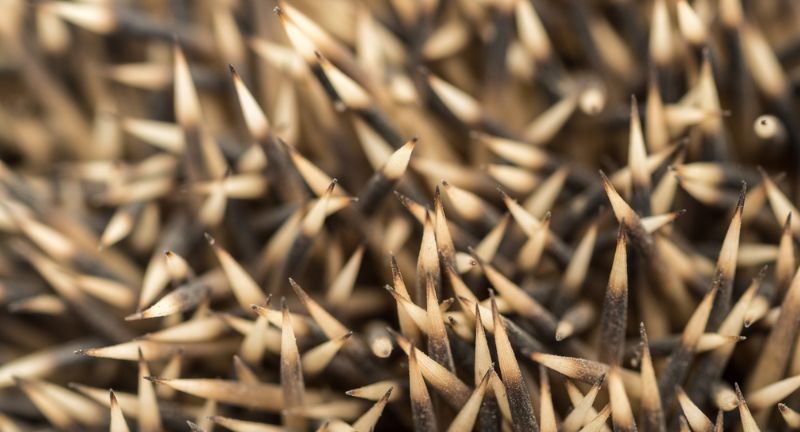
Shutterstock
Hedgehogs go through a process called “quilling” during their juvenile stage. During this time, they shed their soft baby spines, which are replaced by sturdier adult spines. This process can be uncomfortable for hedgehogs, but it’s a natural part of their development. The new spines provide them with enhanced protection against predators.
They Can Travel Long Distances

Shutterstock
Despite their small size, hedgehogs are capable of covering significant distances. In a single night, they can travel up to two miles while foraging for food. Their nightly adventures highlight their determination and stamina. This ability helps them adapt to various habitats and find sufficient resources.
They Were Once Used for Superstitions

Shutterstock
In Medieval Europe, hedgehogs were surrounded by myths and superstitions. People believed they stole milk from cows and sometimes associated them with bad luck. These misconceptions led to their unjust persecution in some regions. Today, we know these beliefs were unfounded, and hedgehogs are celebrated for their ecological benefits.
Their Teeth Are Built for Crunching

Shutterstock
Hedgehogs have sharp teeth perfectly designed for their insect-heavy diet. Their teeth allow them to crunch through the hard exoskeletons of bugs and other prey. This makes them efficient hunters despite their small size. Their diet not only sustains them but also helps maintain balance in their ecosystems.
Hedgehogs Can Live Up to 10 Years

Shutterstock
With proper care, hedgehogs in captivity can live up to a decade. In the wild, their lifespan is typically shorter due to predators and environmental challenges. Their longevity as pets makes them a long-term commitment for owners. Providing them with a safe, enriched environment can ensure they thrive for many years.
They’ve Inspired Video Game Characters

Shutterstock
Hedgehogs have left their mark on pop culture, most notably through the iconic video game character Sonic the Hedgehog. Sonic’s speed and agility were inspired by these real-life creatures’ surprising swiftness. This connection has introduced millions of fans to hedgehogs’ unique traits. The character’s popularity has also helped raise awareness about hedgehogs worldwide.
Conclusion

Shutterstock
Hedgehogs are truly remarkable creatures that offer a glimpse into the wonders of nature. Their fascinating adaptations, adorable behaviors, and ecological importance make them beloved by animal lovers around the world. From their ability to thrive in diverse environments to their quirky habits like self-anointing, hedgehogs never fail to amaze us. By learning more about these incredible animals, we can better appreciate the role they play in our ecosystems. Hopefully, these 25 facts have inspired you to look at hedgehogs with a newfound sense of wonder.
More Amazing Animals+
-


Hawk Yeah! 26 Facts About The Best Birds
-


21 Deadliest Animals In North America
-


More – Alligator arrest outside of a school in Charleston,…
-


30 Creatures With Astonishingly Loud Calls
-


From Hopping to Boxing: 25 Incredible Facts About Kangaroos
-
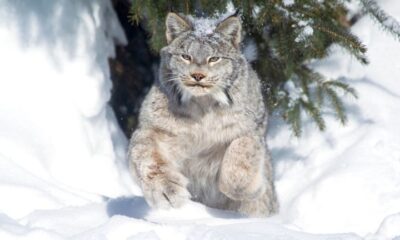

Fur Real: 25 Animals with Nature’s Thickest Coats
-


25 Deadliest Sea Creatures In The World
-


Fascinating Ferrets: 25 Facts About These Mischievous Creatures
-


31 Reasons Porcupines Are Even Cuter Then They Look
-
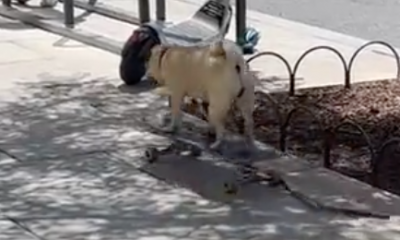

Mr. Butts the Pug Attempts to Skateboard
-
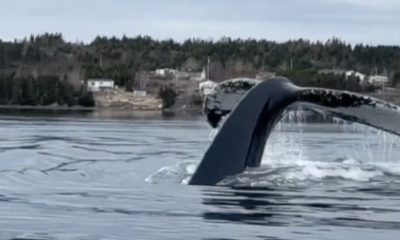

Humpback whale breaching in Newfoundland, Canada
-


Fearsome Neighbors: 25 Places Where Wildlife Terrorizes Residents
